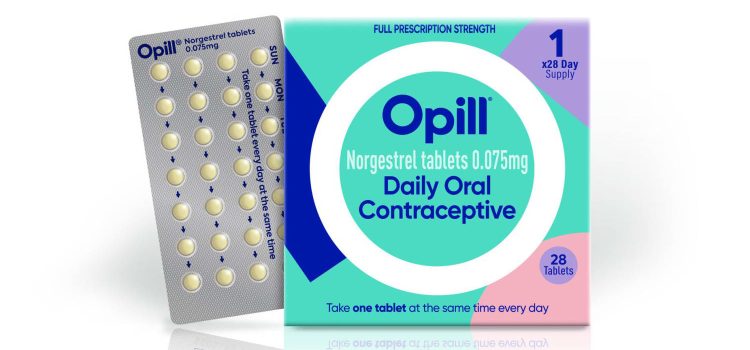
Introduction: A Milestone in Women’s Healthcare
The launch of the first over-the-counter (OTC) birth control pill marks a groundbreaking moment in women’s health. For decades, access to oral contraceptives required a prescription, often creating unnecessary delays, stigma, or barriers. Now, with FDA approval, women can purchase safe and effective birth control directly from a pharmacy—without a doctor’s visit.
This shift empowers women with more control over their reproductive health, aligning healthcare with convenience and privacy. In this article, we’ll explore the significance of this development, how the OTC pill works, who it benefits, and what it means for the future of accessible birth control.
What Is the First OTC Birth Control Pill?
The first OTC birth control pill approved in the U.S. is called Opill. It is a progestin-only oral contraceptive, meaning it contains just one hormone—norethindrone—which is commonly used and well-studied for preventing pregnancy.
Unlike combination pills that include both estrogen and progestin, progestin-only pills are often chosen for their fewer side effects and are considered safe for most women, including those who cannot take estrogen for health reasons.
How Does It Work?
Progestin-only pills prevent pregnancy primarily by:
- Thickening cervical mucus to block sperm
- Altering the uterine lining to make implantation less likely
- Sometimes suppressing ovulation, depending on consistent use
To be most effective, Opill must be taken at the same time every day, without breaks.
Why This Approval Matters
1. Eliminates Access Barriers
Previously, women needed a prescription to get birth control pills—requiring doctor visits, insurance, or telehealth access. This posed challenges for:
- Teens and young adults
- People without health insurance
- Individuals in rural or underserved areas
With OTC access, more people can take charge of their reproductive health on their own schedule and terms.
2. Supports Health Equity
The OTC birth control pill can reduce disparities by improving access for:
- Women of color
- Low-income individuals
- Immigrant communities
By removing the gatekeeping involved in prescriptions, the pill becomes more accessible to diverse groups, helping address systemic healthcare inequalities.
3. Normalizes Contraceptive Use
Making birth control available OTC helps normalize its use, treating it like any other personal health product. It reduces stigma and supports the idea that reproductive healthcare is a basic right, not a luxury.
Safety and Effectiveness
Many people wonder: Is it safe to take birth control without a prescription?
Yes, and here’s why:
- Opill has been used for decades with a solid safety record
- It contains no estrogen, reducing the risk of blood clots and related complications
- Most side effects are mild and manageable, including nausea, headaches, or changes in menstrual flow
Clinical research and the FDA have shown that women can understand the labeling and use the pill correctly, even without a doctor’s guidance.
Who Should Take Opill?
Opill is suitable for most women, but it may be ideal for:
- Women seeking a hormone-based contraceptive without estrogen
- Those looking for a private, convenient birth control method
- Individuals in areas with limited access to healthcare services
However, certain medical conditions may require caution. Women with breast cancer or unexplained vaginal bleeding should consult a healthcare provider before use.
Cost and Availability
As of now, exact pricing may vary, but efforts are being made to ensure the pill remains affordable and widely available.
Many advocates and organizations are pushing for insurance to cover OTC birth control pills, or for manufacturers to offer discounted pricing through pharmacy programs.
Opill is expected to be available at major retailers like:
- CVS
- Walgreens
- Walmart
- Target
- Amazon (online)
The ease of purchasing it online or in-store further removes barriers for people with busy schedules or limited transportation.
Broader Impact on Women’s Health
The introduction of the OTC pill is not just about contraception—it reflects a broader shift in healthcare autonomy.
Empowerment Through Education
With more access comes the need for better education. Packaging and marketing of Opill include clear instructions and safety information, making it easier for women to make informed choices.
Public health campaigns are also helping raise awareness about:
- Proper use
- When to seek medical advice
- What to expect when taking progestin-only pills
Encouraging Preventive Care
Although the OTC pill reduces the need for doctor visits to get contraception, it does not replace regular healthcare. Women are still encouraged to see healthcare providers for:
- Pap smears
- Breast exams
- STI testing
- General wellness check-ups
The goal is autonomy with support, not isolation from care.
Addressing Concerns and Misconceptions
Will OTC Access Encourage Risky Behavior?
This concern is not supported by research. Studies show that easier access to birth control:
- Does not increase sexual activity
- Does reduce unintended pregnancies
- Promotes responsible reproductive choices
What About Parental Consent for Teens?
Like other OTC medications, the pill will likely be available to anyone, regardless of age. Many organizations, including the American Academy of Pediatrics, support confidential access for teens to promote safer outcomes.
Global Context: A Step Forward
The U.S. is actually catching up to many other countries. OTC access to birth control pills is already available in places like:
- Mexico
- India
- The UK
- Australia
This FDA approval helps bring the U.S. in line with global trends that trust women to manage their own reproductive health.
Conclusion
The approval of the first over-the-counter birth control pill, Opill, marks a major leap in women’s healthcare. It empowers individuals with greater control, reduces access barriers, and promotes reproductive autonomy. With proven safety, ease of use, and the potential to reach underserved communities, this development sets a precedent for inclusive, accessible health solutions. While it doesn’t replace the need for comprehensive care, it is a critical tool in helping women make informed decisions. The OTC pill is more than just a product—it’s a symbol of progress and empowerment in modern healthcare.










